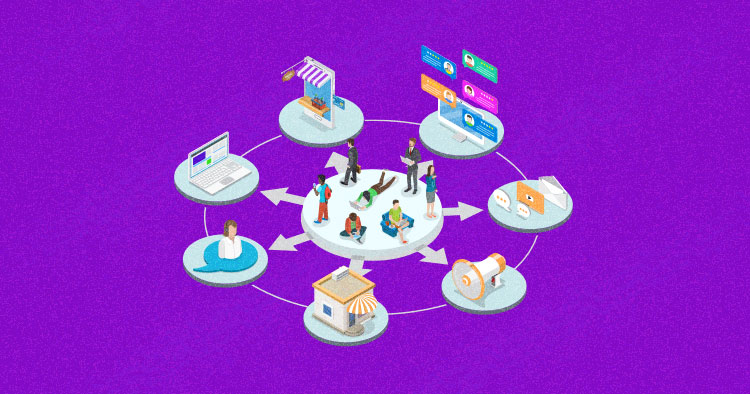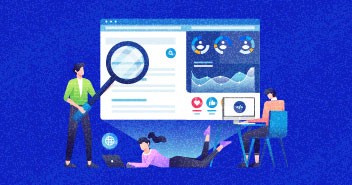
Repeat sales. What is it that keeps them out of the reach of ecommerce stores, even when they’re driving traffic to their products?
Well, Facebook ads, Instagram ads, influencer marketing, and other marketing strategies only go so far for the most part. The most you can expect from isolated marketing activities is one-time sales.
Getting repeat sales and referrals, however, depends on your ecommerce customer experience.
More than discounts and inexpensive products, buyers prioritize excellent experience. About 86% of buyers are willing to pay more for good customer experience.
In the next few sections, we’ll cover what an ecommerce customer experience is, how to improve your ecommerce experience alongside brands crushing it.
Let’s dive in.
- What is Ecommerce Customer Experience?
- Why Does Ecommerce Experience Matter?
- Tips to Improve Customer Experience for Your ecommerce Store
- Build a User Friendly Website
- Optimize for Mobile
- Provide Free and Fast Shipping
- Build Beautiful Product Pages
- Build a Community on Social Media
- Send Clear Emails
- Simplify the Purchasing Process
- Engage with your Customers Across all Channels
- Treat your Employees Well (if You Have Any!)
- Provide Excellent Customer Support
- Personalization
- Ask for Referrals
- Go Omnichannel – Omnichannel Customer Experience as the Way Forward
- Metrics to Measure Customer Experience
- 3 Examples of Brands with Astounding Ecommerce Experience
Load Your Ecommerce Store Under 1 Second
Cloudways offers the best hosting for ecommerce website with advanced cache that enhance store operations and performance.
What is Ecommerce Customer Experience?
Simply put, ecommerce customer experience is how you make your customers feel. It’s the perceived impression your customer has about your brand.
Don’t tell me how good you make it, tell me how good it makes me when I use it – Leo Burnett
Good customer experience is about winning your customers’ vote by appealing to their emotions and logic.
However, customer experience isn’t the same as or limited to customer service. While both are used interchangeably, one looks at the bigger picture.
Customer service is the assistance you provide to your customers. Customer experience is the overall impression you make on them. It includes all meeting points between you and your customers.
Why Does Ecommerce Experience Matter?
Well, customer experience is how you keep existing customers and win more at the same time.
A good ecommerce experience leads to more happy customers. And happy customers turn into brand evangelists.
When you have more happy customers, you can cut down on your customer acquisition costs. Instead of getting new customers, you’ll have happy customers l be right there to get you referrals.
A study about what customers do after a good and bad customer experience found that 36.7% tell their friends and family about a good experience they had with a brand.
 Source: Qualtrics XM Institute
Source: Qualtrics XM Institute
And 33.7% tell their friends about bad customer experiences.
While the statistic is a year old now, the fact remains that humans are social beings and are hardwired to share their wins.
So for every happy customer you have, you get an additional uncommissioned brand ambassador.
The same thing goes for an unhappy customer. But only 20.1% send feedback to a company after having a bad experience. So the majority of customers stop using a bad service, without giving the company feedback.
And that’s the more reason your ecommerce customer experience should be stellar. With a bad or below average ecommerce experience, you stand the risk of losing more customers.
Besides, with more ecommerce brands emerging, the only way to stand out is through a well-designed ecommerce customer experience.
Your customer experience defines your identity and culture. It’s the perfect growth strategy to withstand economic strains and unpredictable events.
With more referrals and a drop in the advertising budget, the growth of your ecommerce store becomes more assured.
To crown it all, it costs more to win a new customer than to retain an old customer.
Ready to improve your customer experience? Let’s dig further.
Tips to Improve Customer Experience for Your ecommerce Store
Building an excellent customer experience isn’t a series of strategy, but a culture of valuing your customers more than the product
It shouldn’t come as a surprise that customers buy brands and not products.
So you need to impress, and provide an all-around amazing experience.
Here are twelve amazing tips to improve your customer experience.
1. Build a User Friendly Website
To start with the obvious, what pertains to an ecommerce store is its website. Your website can either make or mar your business.
As said earlier on, excellent customer experience is a culture. And the culture must be evident in all practices.
Your first contact or first impression with your potential customers will usually be through your ecommerce website.
That’s where you direct your paid ads and organic traffic. And as always, the first impression matters.
If you direct your potential customers to a poorly designed ecommerce website, their first impression of your brand will be a poor one.
The perceived impression influences their interaction with your brand.
Here’s an example of a total mess:
 Source: Arngren.net
Source: Arngren.net
What runs through your mind looking at the store above?
How quickly you can click away, right?
Most ecommerce stores today aren’t as bad as all that.
But your store doesn’t have to look as chaotic as the one above before it’s tagged as an unfriendly ecommerce site.
Your website is not conducive to a good customer experience if it:
- Has slow site speeds
- Lacks proper navigation
- Has no product categorization
- Lacks advanced product filter options
- Doesn’t have clear CTAs
Building a customer-centric ecommerce website is a technical tip to improve your customer experience.
Your ecommerce store must be easy to navigate. Make your links and buttons visible and clear. Carefully choose your font style, color, and background.
As simple as those steps sound, they could have a big impact on your business.
Finally, your site must have a fast loading speed. A slow site speed irritates customers, and poorly affects your SEO as well.
 Beardbrand site speed
Beardbrand site speed
While the ideal load time is 1-2 seconds, a lot of ecommerce stores aren’t there yet.
Here are some tips to improve your site speed:
- Use scaled product images
- Minimize redirects
- Leverage browser caches
2. Optimize for Mobile
Another factor that shouldn’t be neglected is mobile optimization. According to a review by SaleCycle, 65% of visits and 53% of sales were made on mobile.
 Source: SaleCycle
Source: SaleCycle
That’s to say, if your store isn’t optimized for mobile, you are not catering to over half of your potential customers.
Here are some tips to optimize your store for mobile:
- Make the mobile version easy to navigate
- Avoid heavy content and keep it simple
- Make font legible and balance the whitespace
- Improve the website’s mobile load speed
3. Provide Free and Fast Shipping
Everyone loves free things. So offering free shipping is a win for ecommerce brands.
Most customers would rather choose a high-priced product with free shipping than a low-priced product with a high cost of shipping. There’s a reluctance to pay more for the shipping cost than the product.
In addition to that, fast and efficient delivery is an essential step for survival. If your shipping and delivery service is poor, your customers wouldn’t think twice to find an alternative.
You also need to provide more shipping options to your customers. A rigid shipping option will not help the situation.
You should also have flexible shipping options,especially if you’re targeting the global market.
Keep in mind that 66% of potential customers are willing to leave you for a competitor with flexible shipping options.
Here are some shipping ideas you can consider:
- Offer free shipping
- Allow orders to be split up and ship to multiple addresses
- Display the estimated delivery date (give them something to hold on to, it’s essential, you both need to be on the same page)
- Offer a decent shipping policy
The “shipping policy” cannot be over-emphasized. Putting in place measures to ensure that the products get to your customer is important. Plus, the product must not be different from what the customer ordered.
4. Build Beautiful Product Pages
Product pages are the engine of an ecommerce website. That’s where you display products and their details. That’s where your customers take desired actions.
However, the product pages are a breeding ground for mistakes.
An excellent ecommerce experience has a lot to do with your product pages.
What does your product page look like? Is it compelling enough for customers to take the desired action “buy”?
 Source: Beardbrand
Source: Beardbrand
Great pages:
- Appeal to both the emotion and logic of potential customers
- Have clear and visible CTAs (add to cart, buy now)
- Are search engine optimized
- Have high-quality images and product descriptions
Appealing to customers’ emotions involves personalizing the product page, writing good copy (that sells the benefits), using high-quality product images, and a lot more.
However, you also need to pay attention to your web hosting package. Make sure you choose the best ecommerce hosting so that your pages load up quickly! This is critical to the customer experience.
5. Build a Community on Social Media
As an ecommerce brand, you need to engage with your customers where they are, which is on social media.
Making your customers happy isn’t work for AI or automation tools to do. Your person is highly needed.
You get to share that element of humanity on social media. Give your brand a face.
Creating and sharing interesting content on social media is a strategy for sustainable growth and customers who feel like they’re part of your brand. It builds a strong community where you can promote new products.
Create content that’s educational, entertaining and creative. Make your content visual. Promote it aggressively on social media.
Increasing your followers on Facebook, Instagram, and other networks require you to constantly engage and create content.
6. Send Clear Emails
Emails are a deeply entrenched part of the ecommerce marketing strategy. But it’s easier said than done to stand out with your email campaigns.
Customers are familiar with the usual sales emails. There are hundreds of templates out there that most brands use without changing. To make an impression, you have to make your message more unique.
The emails you send also influence the perception of customers about your brand, so it helps to adopt a friendly tone. Avoid being salesy. Send the emails you would love to receive. Provide value even in your emails.
This doesn’t just apply to sales emails; even after purchase, your transactional emails must be clear and concise.
Your subject titles and links must clearly define what the email’s about.
Here’s are the highlights of what makes a clear email:
- Proper email structure
- A clear call-to-action (CTA)
- Compelling email subject/title
- Personalization
7. Simplify the Purchasing Process
It’s backed by data – brands with a simpler online shopping experience are 62% more likely to win a quality sale.
A complex purchasing process leads to cart abandonment.
Remember that one of the great perks of buying products online is simplifying the shopping process. Your customers don’t want to walk into a store. They want a stress-free, uncomplicated buying experience.
By providing a complex purchasing process with a long checkout form, you indirectly subject your customers to a hassling experience.
The result? They abandon the cart and seek an alternative.
Even if you send them follow-up emails, they’re unlikely to return.
Save yourself the stress by working on your purchasing process.
The process should be short and simple from the point a customer lands on your product page to the point of purchase.Say goodbye to long lists of fields in your checkout form. Cut out the fluff and make it simple.
A survey by SaleCycle revealed that what customers find most frustrating is having to fill out the same information twice on a checkout page.
 Source: Namogoo
Source: Namogoo
To avoid repeating information, include checkboxes. Allow multiple payment gateways and methods.
Brands that provide multiple payment methods get a boost in sales.
8. Engage with your Customers Across all Channels
Besides Facebook, Twitter and Instagram, engage with your customers on as many other channels and platforms as possible..
This is known as a multi-channel strategy.
It’s a simple strategy that helps you develop and build a relationship with your customers across multiple channels.
As a rule of thumb:
- Create content consistently on your blog
- Create more content on social media networks
- Get on industry forums and engage with your audience
- Review sites are a great place to engage with customers whenever they leave a review.
- Don’t forget Reddit!
If you ever plan to outsource your content, ensure you hire an expert that understands the industry.
Always remember that your contract employees are also your brand ambassadors.
9. Treat your Employees Well (if You Have Any!)
As we said earlier in this piece, ecommerce customer experience is more of a culture than a series of laid down steps. “No matter how hard you try to hide it, your company’s culture will always reflect in your interactions with customers.”
Here’s a video of some grocery staff coming round to calm a baby:
That says a lot about the company culture.
Here’s the thing:
If your employees aren’t happy about their job, you won’t have a happy customer either.
That’s why, whenever you’re hiring, look for people who’ll easily adapt to your company’s culture. And once you’ve hired them, treat them well.
Happiness is contagious. The happier your employees, the more invested they are in ensuring customer satisfaction.
A successful brand that does this well is Zappos. Zappos treats their employees well.
10. Provide Excellent Customer Support
Customer support is often the first thing to come to mind when you hear the phrase “customer experience”.
Well, that remains an essential part of improving your customer experience.
Your customer support personnel is the first touchpoint.
There’s more to the requirements of a customer support agent than work experience. Like having an AI knowledge management system that levels up their work productivity.
We’ve all had our fair share of bad customer experiences. Sometimes, it’s more of the brand representative than the brand itself.
Be careful in whose hands you leave your brand image.
The person who has direct and constant communication with your customers must be vetted.
Zappos remains one of the best brands with excellent customer service. Heck, their longest customer service call record time is 10 hours, 51 minutes.
Amazon does great here as well. Here’s a screenshot of a live chat between their support and a customer:
 Source: Amazon
Source: Amazon
11. Personalization
Personalize your communication with each customer according to their unique problems and needs for a better ecommerce customer experience.
While everything can’t be personalized, there are some communication channels and touchpoints that are within your reach.
Addressing your customers by their name is the least of it when it comes to personalization.
Create content that appeals to the multi-faceted problems your potential customers face.
Social media offers more avenues for personalized communication when engaging with customers.
With behavioral targeting, tagging, and segmentation, you can create and send personalized messages to your customers. You get to tag them and put them in segments. By doing so, you can create and send hyper-targeted emails to each segment.
12. Ask for Referrals
If you’re getting it right, you’ll start seeing a bump in your referrals.
But always ask your customers for referrals. There’s nothing wrong with doing that.
Asking for referrals is a way of identifying if your customers are happy with your service.
If they aren’t, they wouldn’t refer others to you.
What’s more, ask for reviews as well. By asking your customers to leave you a review, you identify your weaknesses and also help others trust your brand.
Go Omnichannel – Omnichannel Customer Experience as the Way Forward
The future of excellent customer experience is the omnichannel experience.
While the twelve tips above would help you create a great customer experience, the omnichannel experience is at the height of the customer experience strategy.
An omnichannel experience is a cross-channel strategy that integrates multiple channels for a better user experience.
The idea of an omnichannel strategy is to enable customers to start a process on one channel and seamlessly finish it on another.
Your customers should be able to pick up on a channel where they stopped on another channel.
For instance, a customer can start by visiting an ecommerce store to browse for a product. A gown, let’s say.
Then they leave the ecommerce store and browse the brand’s Facebook page.
Excited about a discount offer, the shopper proceeds to fill the payment information directly on Facebook and makes the purchase for a smoother customer shopping experience.
Thereafter, the shopper uses a mobile phone to track the progress of the order.
The brand delivers an oversize gown.
Immediately, the shopper logs a complaint via an email. And follows up over the phone.
The store, which is a local one, sends the right product within a day.
And you have a happy customer with a smoother customer shopping experience.
That’s exactly what an omnichannel experience is. Being able to drop a channel, pick up from another channel, and continue the communication without having to repeat any process.
This strategy can be reflected within customer service. Each communication channel must be integrated into your support services.
Unlike a multi-channel strategy, omnichannel is more concerned about the customers than the product.
tand the trends and changes in customers’ demands.
Metrics to Measure Customer Experience
Measuring ecommerce customer experience isn’t straightforward.
That said, some experience metrics can be indirectly tied to good customer experience.
Let’s take a look at them.
1. Customer Churn Rate
Customer churn rate is the rate at which customers stop using a service or buying a product.
It measures the percentage of customers that stop buying from you within a period.
To calculate your customer churn rate over a period, you determine the total number of customers during the period and the total number of customers lost.
Divide the number of churned customers by the total number of customers you have, then multiply by 100%. It’s one of the most important experience metrics to follow.
By consistently measuring your churn rate, you’ll identify whether it’s increasing or decreasing.
A decreasing churn rate is decreasing indicates you’re providing better customer experience.
2. Customer Satisfaction
Known as CSAT, the customer satisfaction score is the easiest way of measuring your ecommerce customer experience.
Immediately after a customer purchases a product or contacts your customer service, follow up with a survey on their experience.
Then your customers give an instant rating of the service and experience they received.
The average score of the rating is the CSAT.
A low average score denotes that there’s a need for improvement and a high score denotes you’re getting it right.
3. Net Promoter Score (NPS)
The Net Promoter Score measures the likelihood of your customers to recommend you to others.
To do this, send a survey to your customers about how likely they are to recommend you to others using a scale point of 0 to 10.
Unlike the customer satisfaction score, this measures their overall experience with your brand.
4. Reviews
When customers have either a bad or good customer experience with your brand, some of them leave reviews for you.
An angry customer would leave an ugly review about your brand and a happy customer would do the exact opposite.
Check out review sites and monitor the reviews left by your customers and also address their bad experiences with you.
Review sites like Capterra and Trustpilot are good places to manage your customers’ reviews.
3 Examples of Brands with Astounding Ecommerce Experience
Besides the aforementioned brands with excellent ecommerce experience and a straightforward ecommerce customer journey, here are three more brands to learn from.
1. ScentBird
Scentbird is a beauty company that allows you to test new fragrances without buying the full bottle.
It’s a great example of excellent overall customer experience.
Besides the fact that ScentBird offers a unique product and service, its website is also extremely user-friendly and simplifies the ecommerce customer journey.
Their homepage leads you to two different landing pages for men and women’s products.
 Source: ScentBird
Source: ScentBird
The typical ecommerce store presents you with a page filled with different product images. ScentBird does none of that.
Instead, it offers clear and simple site navigation that directs you where next to go.
What’s more, ScentBird personalizes the experience for each customer by starting with a pre-designed survey to find the perfect fragrance match for you.
This also serves as a tip to get you into their cycle.
Here’s a breakdown of how ScentBird excels with their customer experience:
- Simple site navigations
- Personalized landing page
- Fragrance suggestions based on your personal information collected via a quiz
- A single checkout page with fewer fields to fill
- Consistent engagement with their audience across all channels
- Offers a free sample to bloggers to review their service
ScentBird has built a strong community on social media. For instance, their Facebook page has over 600K followers.
 Source: Facebook
Source: Facebook
Besides, ScentBird regularly educates (potential) customers via their other channels, including their blog.
2. Beardbrand
 Source: Beardbrand
Source: Beardbrand
Beardbrand is a notable example of a successful ecommerce brand.
But little is mentioned about their customer experience.
One secret behind this million dollar ecommerce brand is its amazing ecommerce experience.
Besides a user-friendly ecommerce website, Beardbrand has gone the extra mile to educate and satisfy their customers.
Similar to ScentBird, Beardbrand goes against the usual ecommerce store design. Instead, it allows you to take a quiz to find a product that fits your lifestyle.
 Source: Beardbrand
Source: Beardbrand
Where it excels is its content marketing. Here’s a BuzzSumo analysis of one of their blogs:
 Source: BuzzSumo
Source: BuzzSumo
It has been shared over 2.6K times.
Here are the highlights of Beardbrand’s excellent customer experience:
- Easy site navigation and user-friendly website
- Consistently creative content
- Constant engagement with customers on social media
- Simple yet converting product pages
- A personalized experience that starts with a quiz and then figures out what suits each customer best.
Lastly, let’s take a look at Pepperfry.
3. Pepperfry
 Source: Pepperfry
Source: Pepperfry
Pepperfry is an online furniture company in India. Founded in 2011, the brand has curated an omnichannel customer experience.
Pepperfry customers can browse their online store for furniture, travel to any Pepperfry studio to take a look at the furniture, and can choose to either buy it right away or from their ecommerce store for a smoother online customer experience.
In the physical store, Pepperfry helps customers make a better choice of furniture.
Following the tips highlighted in this article will give you better control of your customer experience.
Always remember that customer experience isn’t a series of steps. It’s more of a culture.
What steps do you think improve a brand’s customer experience? Share your thoughts below!
Disclaimer: This is a guest post by Olusola David is the founder and CEO of Torchbankz.com, an ecommerce entrepreneur and blogger with a keen interest in Digital Marketing for ecommerce. After starting his online business journey with Dropshipping, he now shares his trial and error experience of many years with new aspiring entrepreneurs.
** Editor’s Note: This article is edited for clarity.
Umair Qureshi
Umair Qureshi is a Digital Marketer at Cloudways. He loves to read and share his digital marketing experience with Ecommerce & Startups community. In his spare time, he enjoys watching and playing cricket. You can email him at [email protected] or connect him on linkedin: https://pk.linkedin.com/in/umair-qureshi-seo


